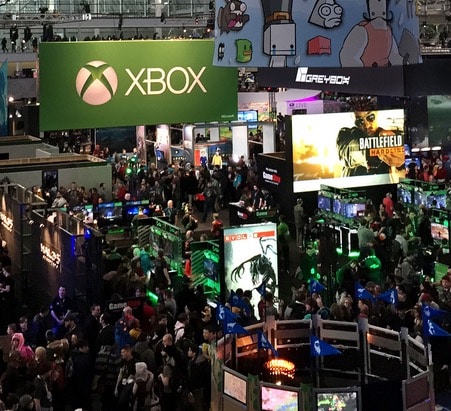It’s almost ironic to think that in spite of all of the technology that surrounds us, most B2B marketers (nearly 70%) place more importance on face to face meetings with prospective clients than they do any other strategy. Knowing this, you might expect that trade show attendees are willing and able to engage with literally hundreds of potential new clients, to great success. But as anyone who’s ever attended such an event can attest, this couldn’t be further from the truth. Try as they might, some companies simply fail to energize and engage passersby, resulting in a poor ROI. If you’re among those that have wondered what could have been done better at your last tradeshow, you might find the following tips enlightening.

Plan Your Tradeshow Attendance in Advance
Let’s just get this out in the open: if you’ve decided to attend a tradeshow at the last minute, it’s probably better that you don’t attend at all. Think about it – so much is on the line each and every time you set foot on the convention center’s floor, and we’re not just talking about sales. If you and your team are unprepared, lack focus, or seem disorganized, prospective customers will pick up on that and form a negative first impression of your brand.
Sure, planning can start with booking flights and hotels, but you can’t forget about your pre, during, and post show strategy to make sure that you’ve left an indelible mark on any potential decision makers you meet. Make sure your team knows the company objectives, and make sure that each member of your team is communicating the same message.
Consider Being a Speaker, if the Opportunity Knocks
Though many of us don’t particularly enjoy public speaking, let’s face it – it can be difficult to stand out at a tradeshow (especially if everyone’s display booth marketing is on point). One way to set yourself apart from the rest is to sign up to be a guest speaker.
Before you do, make sure that you:
Have something new and exciting to say (perhaps an unheard of industry perspective, analysis of emerging trends, etc.)
Cross promote what’s happening at your booth throughout the convention (remember, you’ll have hundreds of people’s undivided attention, so really sell it!) and Produce a great slide deck that contains your contact information
Admittedly, being a speaker is tough, and it might be an uphill battle just to throw your hat in the ring. You’ll likely need to submit a proposal far in advance so this strategy takes quite a bit of forethought.
Get the Word Out Before Your Attend the Show
If you’ve done your pre-show work correctly, you’ll have already generated a great deal of buzz even before your booth debuts. Aside from using social media to inform your followers of what they can expect to see from your company, you can also issue a digital or print media press release detailing what you’ll be unveiling at the show. Because it’s virtually impossible for those attending to visit every single booth during the show, many rely on these types of communications to prepare their “must-visit” lists; if you’re not on that list, you could be missing a huge opportunity.
Like Real Estate, Location is Everything
We’re not saying that choosing a great location on the convention hall floor will put you and your team on easy street, but a strategic location can certainly help you benefit from a greater degree of visibility and foot traffic. Again, these aren’t enough to ensure a great tradeshow, but when combined with everything else it just might give you an edge over your competitor.
Figure Out How Your Team Will Engage
Obviously, you’re going to want to staff your booth with the most engaging outgoing people on your team. But it’s simply not enough to just cram your booth with extroverts; you and your team should establish an engagement plan well in advance. Prohibit the use of tablets, smartphones and laptops – these are easy distractions that could make your team unapproachable. Reserve a time during the day when your team can take a few minutes (away from the booth) to return important phone calls and emails – you don’t want your team to ignore their existing clients. Having said that, the primary focus for those working a tradeshow is to work the tradeshow.
Engaging conversations is one way to get qualified leads, product demos, contests, giveaways, special pricing, and bright motion graphics all play a role in driving traffic and engagement in your booth.
The After Show
When it’s all said and done, gather your team and discuss all aspects of the show; what went well, what could have been done better, determine how many of your goals were reached – it’s all valuable information. Most importantly, it’s good to get this feedback as quickly as possible after the show while it’s still fresh. Remember that failure isn’t always bad; even the biggest and well-known brands on the trade show floor have flopped at one time or another. What’s important is taking that information and determining how it can be leveraged to make the next trade show better.











Leave a Reply